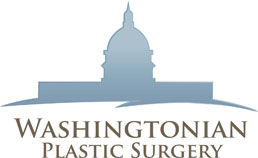Due to its central position on the face, a person’s nose has the ability to significantly affect his/her overall appearance. That being said, a nose that is too large or too small in relation to other features can disrupt facial harmony and make men and women feel self-conscious about their appearance.
Fortunately, a board-certified plastic surgeon, with intimate knowledge of facial anatomy and extensive experience, can skillfully refine the nose with rhinoplasty.
In the right hands, this procedure offers patients cosmetic as well as functional improvements that will improve their confidence and quality of like.
So, is rhinoplasty right for you? Keep reading for Rhinoplasty 101: what you need to know about this procedure should you decide to undergo treatment.
What Is Rhinoplasty?
Rhinoplasty is a surgical procedure that restructures nasal size and/or shape to improve balance between the nose and other features. The goal of a rhinoplasty is subtle enhancement that helps men and women look and feel their best.
Which Concerns Can Rhinoplasty Address?
Many patients seek rhinoplasty to address concerns that may be the result of genetics, an accident, or injury. These issues can include:
- A nose that is that is too wide, narrow, crooked, upturned, or hooked
- Nasal humps, bumps, and asymmetry
- A bulbous or droopy tip
- Breathing difficulties and sleep disturbances
Accordingly, rhinoplasty can be used to increase or decrease nasal size, reshape nostrils, decrease the size of the nasal tip, elevate the nasal tip, reduce bridge height, and improve breathing.
For best results, a chin augmentation or reduction may be recommended in conjunction with a rhinoplasty.
How Is Rhinoplasty Performed?
Rhinoplasty is an out-patient procedure that can typically be performed in one-to-two hours under local or general anesthesia, depending on case complexity.
During the treatment, your plastic surgeon will access and reshape nasal bones, cartilage, and tissues through an open or closed approach. An open approach involves incisions under the nostrils, while a closed approach requires internal incisions only.
What Can Patients Expect from Recovery?
Post-procedure, patients will be sent home with their nose in a supportive splint, which will be removed in seven days. That being said, most individuals take a week off from work to heal.
Recovery from rhinoplasty is a fairly tolerable process and may include some discomfort that can easily be managed with over-the-counter analgesics or prescription medication as needed. Swelling usually subsides in one-to-two weeks, though it can take up to one year to note final results.
If you are considering rhinoplasty, please call our office today to schedule a comprehensive consultation with our highly-skilled and talented plastic surgeon, Dr. Navin Singh.



